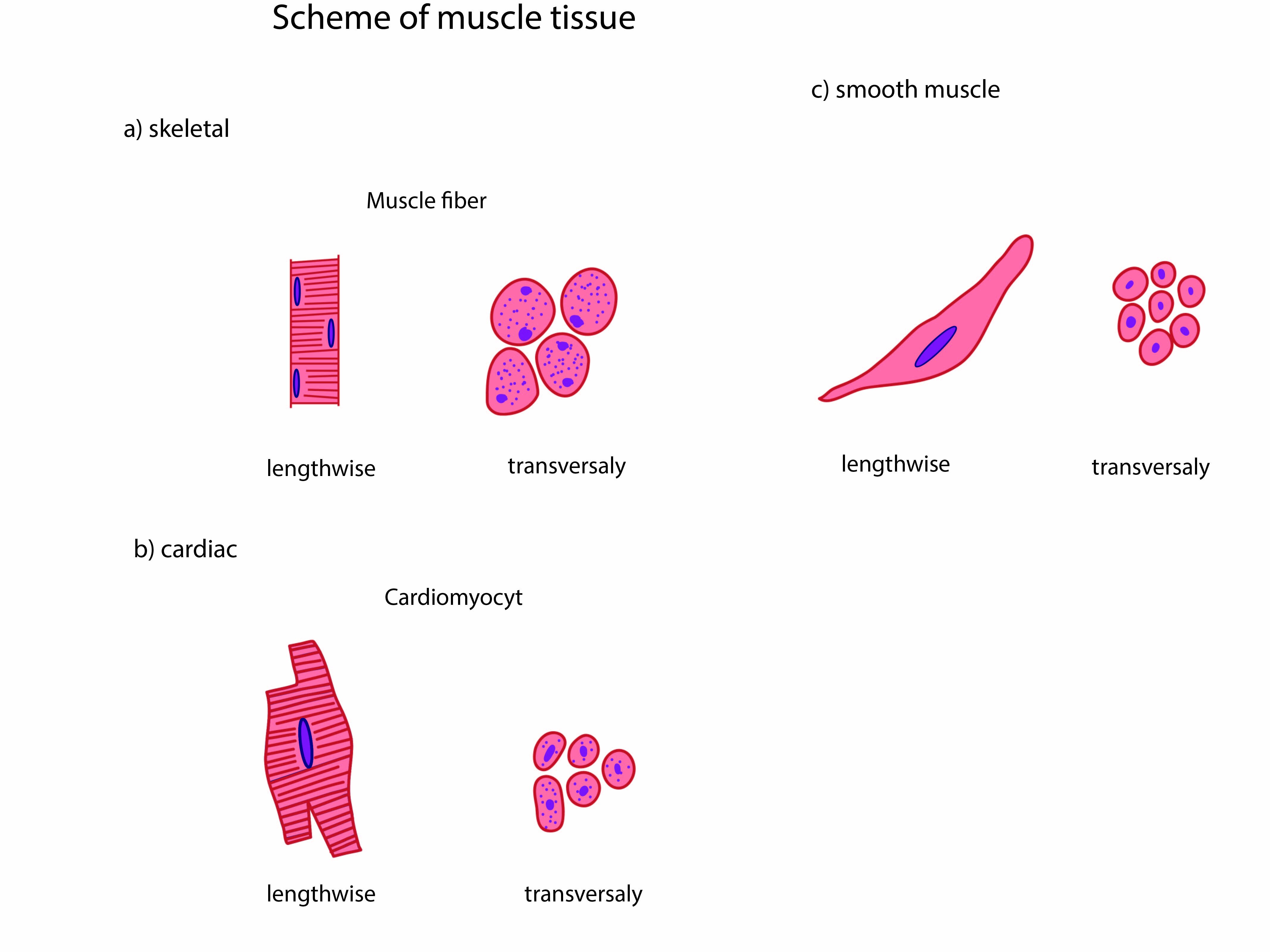
Control of skeletal muscle. Skeletal muscle is a fascinating tissue with a complex structure.
Control of skeletal muscle.
Shape of skeletal muscle cells. Ad Wide Variety of Humanmousecarte Tissue Culture Media and Kits. Normal Human Cells Media High Quality Trusted since 1995. Research over the last few decades has shown that skeletal muscle cells exhibit immunobiological properties that perfectly define them as non-professional antigen presenting cells.
They are able to present antigens via major histocompatibility complex molecules exhibit costimulatory molecules and secrete soluble molecules that actively shape the immune response in an either pro- or anti. Skeletal muscle cells a striated muscle cell type form the muscle that we use to move and are compartmentalized into different muscle tissues around the body such as that of the biceps. Skeletal muscles are attached to bones by tendons and can be as long as.
These muscles appear circular in shape and are normally sphincter muscles which surround an opening such as the mouth surrounded by Obicularis Oris and Obicularis Oculi surrounding the eyes Convergent Muscles. Skeletal muscle cells are kind of shaped like straws. They are long and skinny.
Electron microscopy of skeletal muscle. A longitudinal section through a skeletal muscle cell demonstrates the regular pattern of cross-striations derived from the myofibrils. As shown in this low-magnification electron micrograph the skeletal-muscle cell has many myofibrils aligned in parallel.
The structure of skeletal muscles is shown below-This muscle is attached to the bones by an elastic tissue or collagen fibres called tendons. These tendons are comprised of connective tissues. The skeletal muscles consist of a bundle of muscle fibres namely fascicule.
These fascicules are cylindrical in shape as shown in the figure. Skeletal muscle is a fascinating tissue with a complex structure. It consists of elongated multinuclear cells called the myocytes or myofibers.
The muscle cells can be anything from 1 mm to 30 cm in length. The longest muscle cell in our bodies can be found in the sartorius muscle and is 30 cm nearly 12 inches long. Skeletal muscle is comprised of a series of muscle fibers made of muscle cells.
These muscle cells are long and multinucleated. At the ends of each skeletal muscle a tendon connects the muscle to bone. This tendon connects directly to the epimysium or collagenous outer covering of.
A single muscle cell is elongated in shape containing within it many myofibrils. These are thin strands made of the proteins actin and myosin that perform muscle contraction. The elongated shape of muscle cells allows the contraction proteins to line up in an overlapping pattern that makes muscle flexing possible.
Likewise people ask what is the shape of the skeletal muscle fibers. Skeletal muscle fibers are cylindrical multinucleated striated and under voluntary control. Smooth muscle cells are spindle shaped have a single centrally located nucleus and lack striations.
How are muscle fibers and membranes organized to form a whole skeletal muscle. Figure 1022 Muscle Fiber. A skeletal muscle fiber is surrounded by a plasma membrane called the sarcolemma which contains sarcoplasm the cytoplasm of muscle cells.
A muscle fiber is composed of many myofibrils which contain sarcomeres with light and dark regions that give the cell. Because skeletal muscle cells are long and cylindrical they are commonly referred to as muscle fibers. Skeletal muscle fibers can be quite large for human cells with diameters up to 100 μm and lengths up to 30 cm 76 in in the Sartorius of the upper leg.
During early development embryonic myoblasts each with its own nucleus fuse with up to hundreds of other myoblasts to form the multinucleated skeletal muscle. Because skeletal muscle cells are long and cylindrical they are commonly referred to as muscle fibers. Skeletal muscle fibers can be quite large for human cells with diameters up to 100 μ m and lengths up to 30 cm 118 in in the Sartorius of the upper leg.
Skeletal Muscle Cell. Skeletal muscle cells are long cylindrical multi-nucleated and striated. Every nucleus regulates the metabolic needs of the sarcoplasm around it.
Striated muscle cells have high energy needs in order that they contain several mitochondria so as to generate adequate ATP. Organelles of a skeletal muscle cell contain the same organelles as other animal cells with the addition of myofibrils. Muscle fibers within the skeletal cell are known as myofibers.
These organelles allow skeletal muscle cells to contract. Skeletal muscle cells do contain more mitochondria than other cells because muscle cells require more. Skeletal muscle cells shape adaptive immune responses.
Skeletal muscle cells SkMC present antigens via major histocompatibility complex MHC molecules to specific T cells. Intra- and extracellular antigens are processed by immunoproteasomes MHC-I or lysosomal inclusions MHC-II. MHC presentation is triggered by cytokines or TLRs toll.
What is the cell shape of skeletal muscle. Long cylinders lincoln logs Skeletal muscle. Control of skeletal muscle.
Smooth muscle cells do not have visible striations although they do contain the same contractile proteins as skeletal and cardiac muscle these proteins are just laid out in a different pattern. For the purposes of this class we will focus mainly on skeletal muscle. Shapes of skeletal muscles.
Ad Wide Variety of Humanmousecarte Tissue Culture Media and Kits. Normal Human Cells Media High Quality Trusted since 1995.
